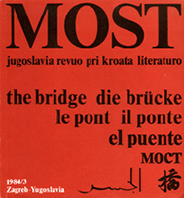
Plus de cent ans nous séparent de la naissance de Romain Rolland, 40 ans du moment où la mort substitua ses »chemins de la liberté« aux chemins de cette éternité dont parlait Flaubert, presque 70 ans de la première traduction d'une de sels oeuvrels chez nous - on pourrait dire que ce recul nous permet d'a,pprécier l'oeuvre complète de Romain Rolland. Toutefois, il serait vain et prétentieux de limiter le romancier, le dramalturge, le musicologue et le publiciste que fut Romain Rolland, dans le cadre d' un portrait limité par un certain nombre de pages.
More...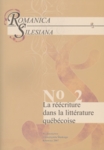
Keywords: Michel Tremblay; autotextuality; metamorphoses; mother; writing
Although the works of Michel Tremblay are replete with references to other authors, it is the phenomenon of autotextuality that becomes the focal point of the analysis in this article. The author of “Chroniques du Plateau Mont-Royal” and numerous plays and novels binds them all together by resorting to the recurrence of his figures. Thus, the figure of Mother, a figure grafted onto the network of Michel Tremblay’s works, undergoes a metamorphosis from boisterous and authoritarian Nana Tremblay (in the autobiographical prose and drama) to a symbol of ideal motherhood embodied by The Great Mother of Tremblay’s universe. She gives the beginning to both new life and new writing and hence she becomes her writer-son’s inspiration and creative muse.
More...
Keywords: Réjean Ducharme; Roch Plante; rewriting; intertextuality; deconstruction; courtly love; surrealism
The article examines the problem of rewriting and intertextuality in the texts of a Québecois writer, Réjean Ducharme. The author analyses Ducharme’s recurrent topic of courtly love in relation to rewriting and intertextuality, juxtaposing the author’s literary texts and his sculptures and paintings, created under the pseudonym of Roch Plante. The text shows the similarity between Ducharme’s literary activity and his artistic collages. Both consist in permanent deconstruction/recomposition of a plethora of literary references, an inomissible element of Ducharme’s creativity.
More...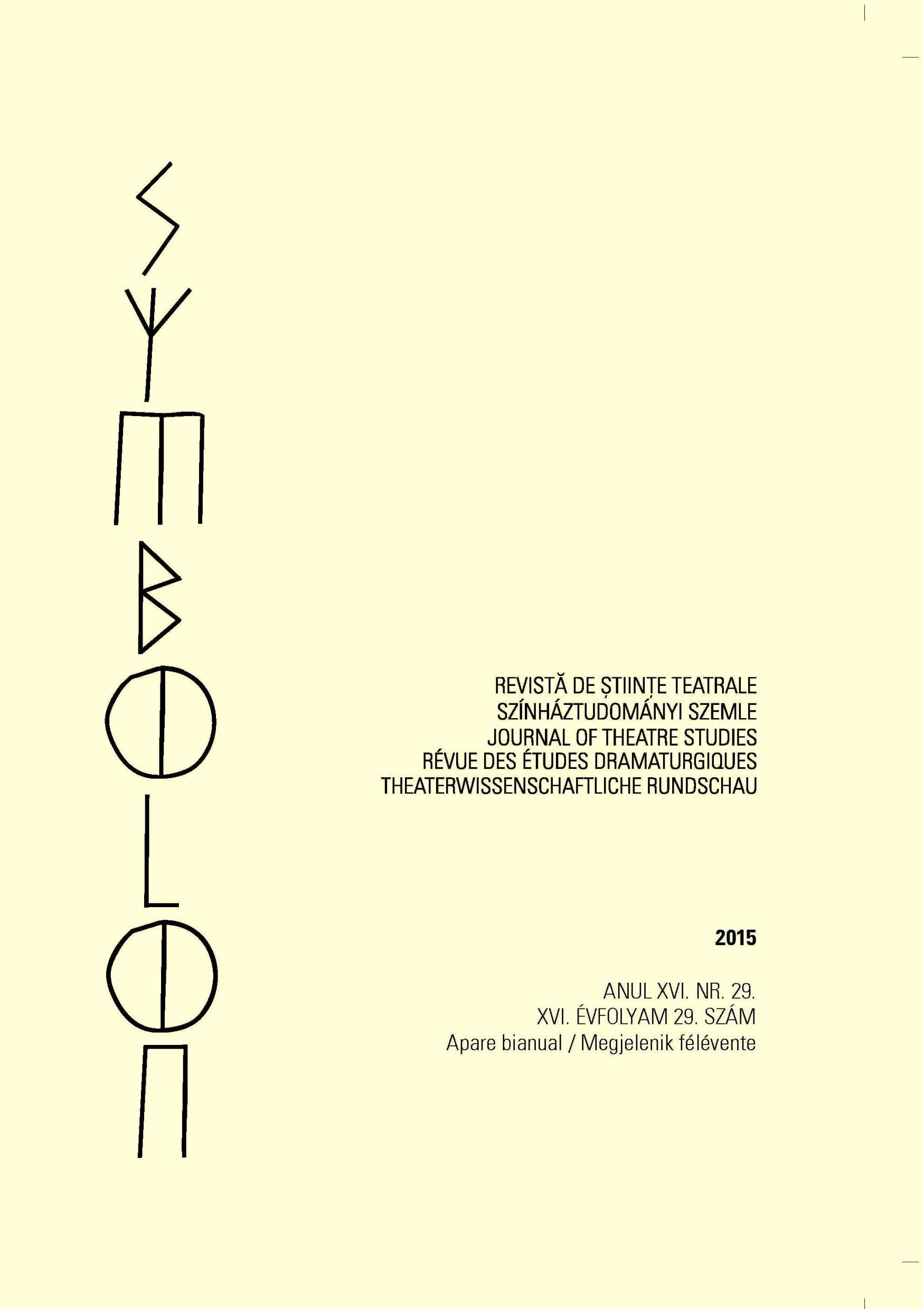
Keywords: voyeurism; auto-psychoanalysis; hyperreality; unknown; intimacy
Writing can be considered as a way to unveil unconscious secrets, as Beckett and Bauchau seem to have tried in their works. This led them to an intimate confession, more or less transparent for themselves and the others. How did they deal with that?Angelica Liddell claims that she makes the "pornography of the soul", promising a true confession. But her secret is fake: her intimate drama lays hidden behind the stage of “Todo el cielo sobre la terra” (“El síndrome de Wendy”). Spectators are trapped in hyperreality.Marie Payen's performance could look like one more exhibitionist show as it's about her father that she's never known. But “Je Brûle” is a confession which cannot be completed: it is permanently reinvented with an improvised text. It reminds us of what we don't and will never know. Her only confession: there are secrets impossible to unveil.
More...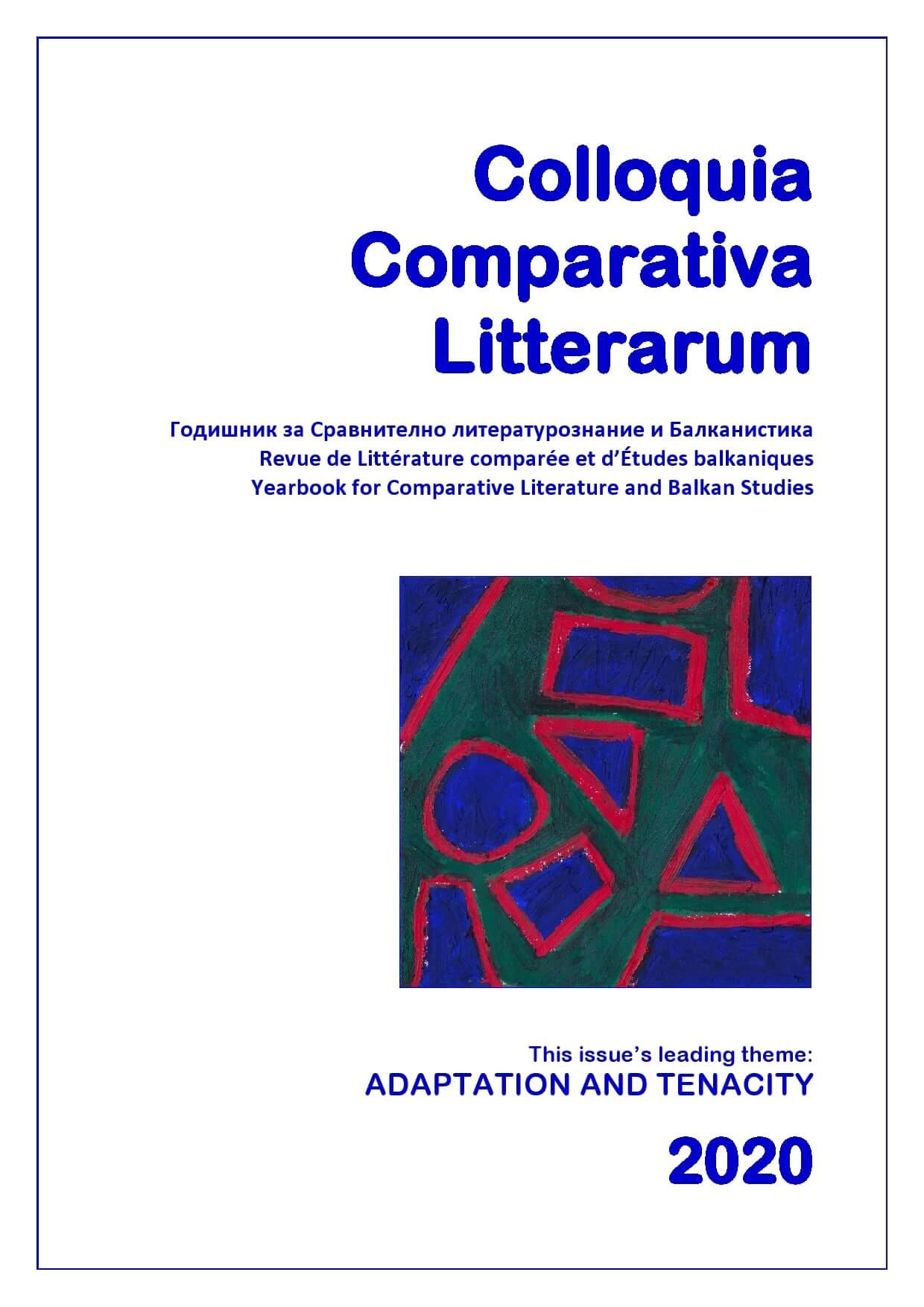
Keywords: exile; bilingualism; Central and Eastern Europe; in-between-languages; Francophone
The article examines the experience of exile among writers who have emigrated from Central and Eastern Europe (Agota Kristof, Emile Cioran, Milan Kundera, Julia Kristeva, Tzvetan Todorov) by establishing the concepts of exile, uprooting and disorientation. The in-between-languages shows the memory of the mother tongue and the situation of permanent discomfort in the adopted language – French.
More...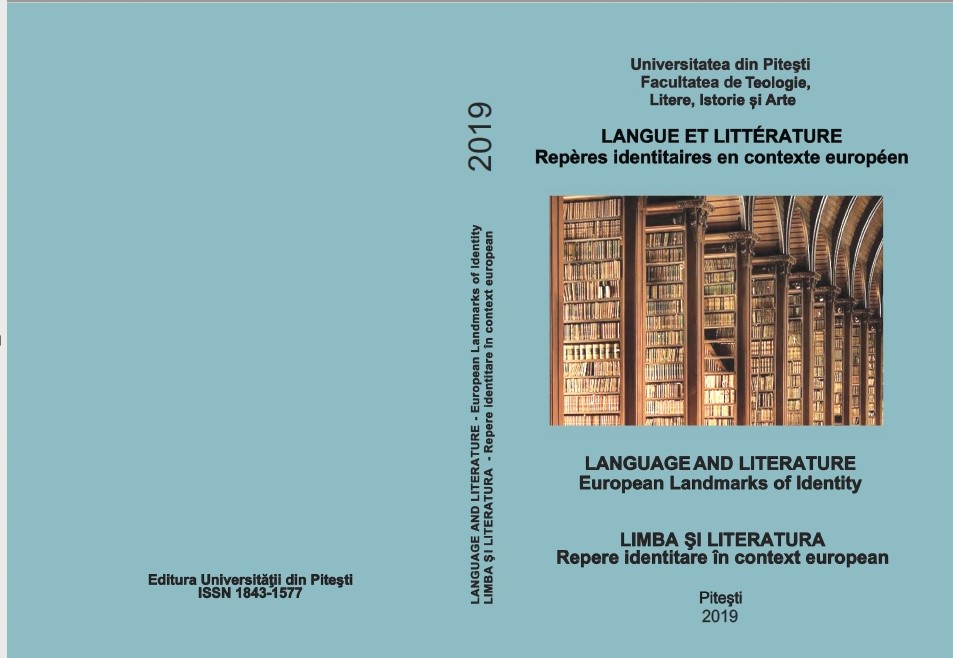
Keywords: intertextuality; hypermodern; humour;
What do we mean by humour and to what extent can we talk about humour today? The concept that Luigi Pirandello (1908) defined in modern times as the capacity to know how to express the “feeling of the opposite” appears as a fundamental requirement for the contemporary writer. Recently, Raffaele Donnarumma provided a reading of Italian literature of the last decades through hyper modernity. Indeed, there has been recorded the return to a gravity of tones and a rigour that seem rather evoke modernism: literature and cinema are taken seriously again, if the change to hypermodern, suggests Donnarumma, takes several forms, my proposal is that one of them can be identified in the resumption of humour. It is possible to find all the characteristics that I listed in the story of Walter Siti, a reason that led me to identify it as a case study of this intervention: sense of the opposite, duplication and eccentricity, ambivalence and paradox, impeccable use of irony and techniques of alienation. In this article, through a reading of texts extracted from what I have identified as being the major phase of Siti’s work. the five novels of “autofiction”: Scuola di nudo (1994), Un dolore normale (1997), Troppi paradisi (2006), Resistere non serve a niente (2012), Exit Strategy (2014) - and the comparison with some contemporary writers aims to reason about a possible theorization of a hypermodern humor.
More...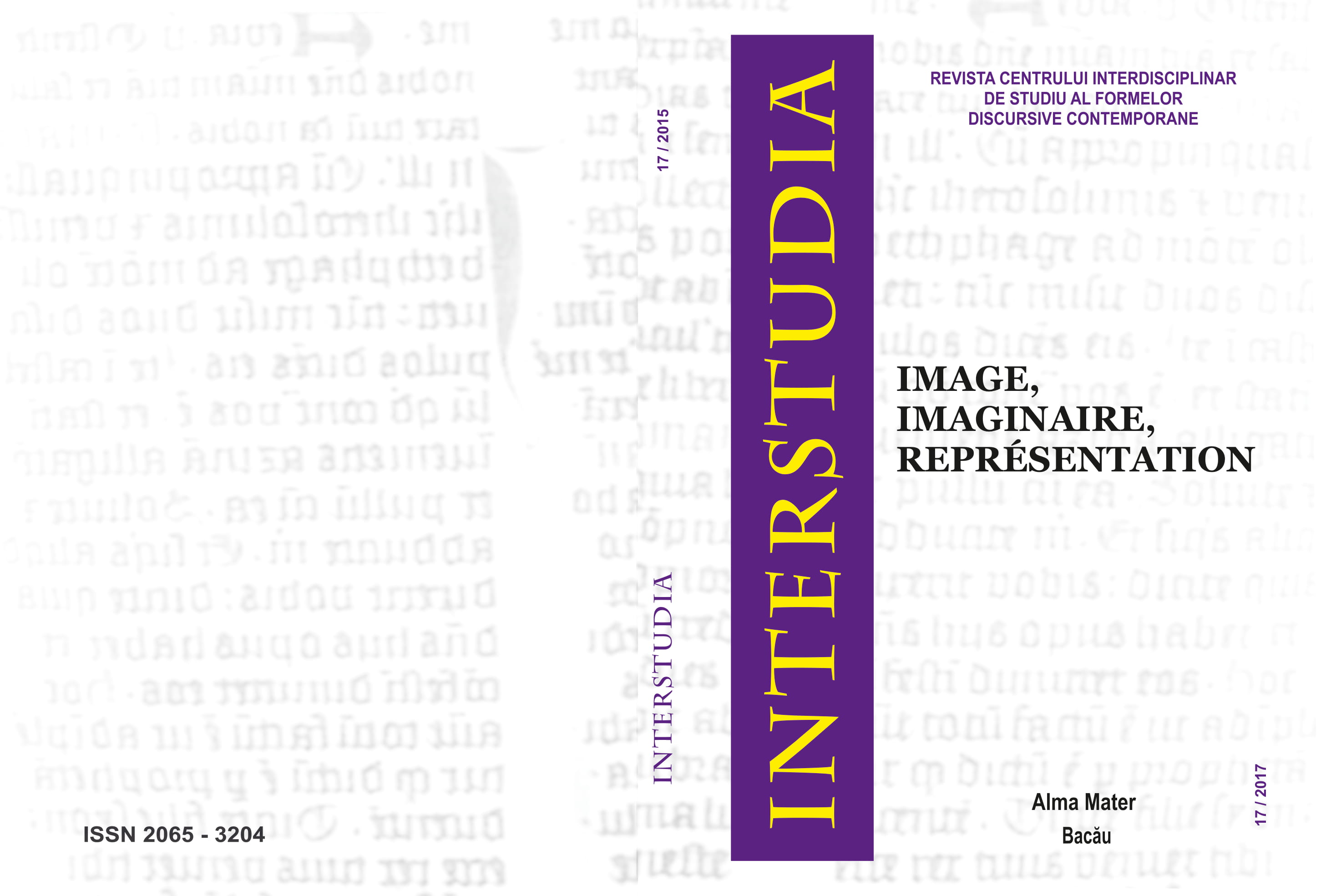
Keywords: quête; mythe; identité; rêve; histoire;
In this paper I emphasize some elements which are to be found both in the myth and Ionesco’s personal experience, as we identify them in the play Le Piéton de l ’air.
More...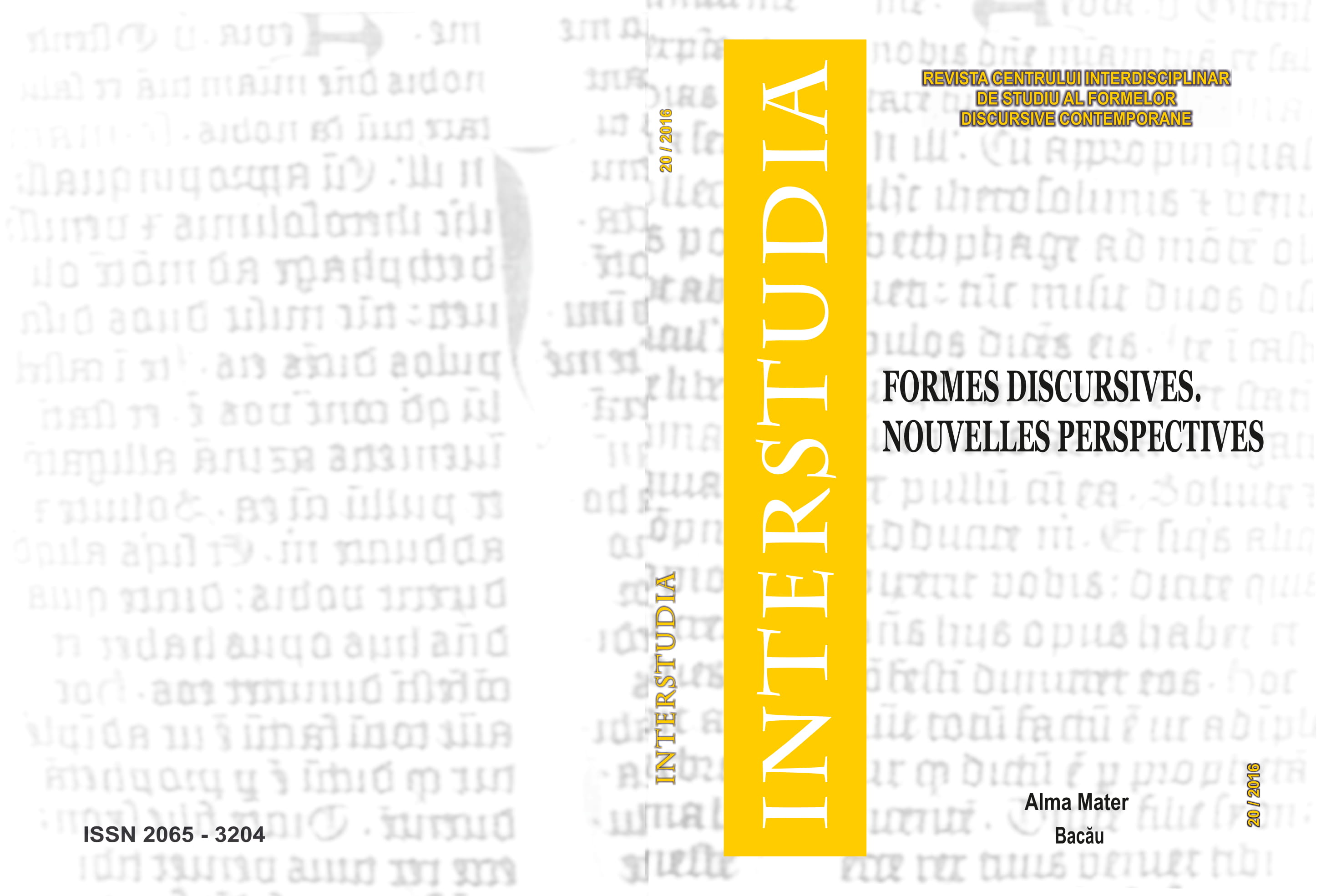
Keywords: communication ; langage artistique ; langage scientifique ; interprétation ;
Il est symptomatique que les grands penseurs, de Platon à Heidegger, ont donné à l’art une place fondamentale dans l’existence humaine. L’intérêt spécial pour le phénomène artistique s’explique par la capacité des œuvres d’art d’encoder dans des formes expressives des significations profondes et de les communiquer à un large public à travers divers langages (littéraires, plastiques, musicaux, etc.). Les changements survenus dans le domaine de la création artistique dans les deux derniers siècles, la succession accélérée des courants artistiques et des mouvements d’avant-garde ont imposé dans l’espace théorique l’idée que l’art est un langage spécifique et une forme distincte de la communication. Cette étude remet en question les traits particuliers du langage artistique et les implications de ces traits dans le processus de la réception artistique. En même temps, j’ai essayé de mettre en évidence la contribution théorique (moins connue) des penseurs roumains à l’analyse du langage artistique et la compréhension du processus complexe de la communication artistique.
More...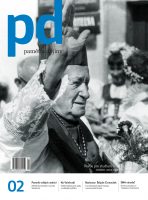
Keywords: Fate of Sofia Malylya ;Soviet security services ;Czech television ;former Cechoslovak citizens ;Ukrainian grammar school ;ethnic minority ;German army troops;
The fate of Sofia Malylya, a poet from Carpathian Ruthenia who was unjustly persecuted by the Soviet security services, is one of the twelve stories in the final part of the trilogy entitled Czechoslovaks in the Gulag, published by the USTR and Czech Television at the end of 2019. Her story is interesting not only in that it documents the persecution of a former Czechoslovak citizen in the Soviet Union, but also because it is strongly linked to the history of the Ukrainian emigration in interwar Czechoslovakia, and illustrates one of its chapters – the history of the Ukrainian grammar school (“Ukrajinské reálné gymnázium”) in Prague and the presence of ethnic minorities amongst the German army troops in Central and Eastern Europe during World War Two.
More...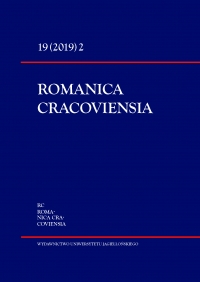
Keywords: Georg Kaiser; Jean-Victor Pellerin; alienation; dehumanization; expressionist drama;
It is commonly said that expressionism was a purely German movement, however, it is difficult not to notice similar tendencies, albeit with a lesser intensity, also in France. Expressionism was not only an artistic movement. It could be seen above all as a certain spiritual attitude towards the dehumanized industrialization. Expressionism was born of existential anxiety of many German writers leading to a rebellion against the bourgeois society. This rebellion was also expressed by some French writers. In this article, the author compares the theaters of Jean-Victor Pellerin and Georg Kaiser from the perspective of expressionistic aesthetics. Both writers describe the alienation of a modern man in the mechanized civilization. They both put attention on the internal crisis of the main character who in the end decides to fight against the hostile reality. Hence, in their works typically for the expressionist drama, the protagonist embarks on a journey during which his internal change takes place. While Georg Kaiser expresses his pessimism by describing apocalyptic scenes, Jean-Victor Pellerin still believes in the power of love which alone can change the fate of mankind.
More...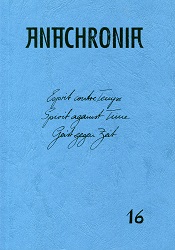
Keywords: Jean-Jacques Rousseau; enlightenment;
It is certain that the issue of recognition and the ideologically simplified Enlightenment mainstream are clearly in conflict. This conflict also played a decisive role in the notorious controversy between Rousseau and Voltaire. Nevertheless, we do not focus on this contradiction, although the ideologically simplified Enlightenment demonstrably avoids any thematization of the problem of recognition. // We are reconstructing here a Rousseau, who was a philosopher of recognition. This means that the problematic of recognition is, in a global way, behind any really relevant philosophical approach of Rousseau.
More...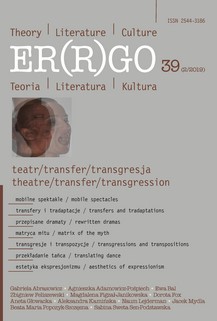
Keywords: Roland Schimmelpfennig; Bertolt Brecht; trangression; Lehrstück; alienation effect;
The author of this article attempts to assess the influences of Brecht’s theory on the literary production by contemporary German playwright Roland Schimmelpfennig. The author follows their transgressions and transpositions based on selected examples of his plays. Referring to the definition of transgression given by Grzegorz Petrek, he attempts to analyse such issues as acting, alienation, the meaning of text and image in Brecht’s drama, as well as its didactic and political potential. With regard to drama and theatre in German, Schimmelpfennig has been under an immense influence of Brecht’s ideas and practices.
More...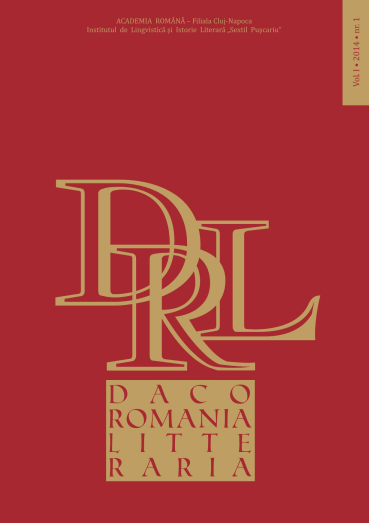
Keywords: fictitious biography; literary circle; Sburătorul; posture; literary circle mythology;
Given as observational material the corpus of fictional texts offered by Sburătorul, the longest running literary circle within the Romanian space, which has functioned in Bucharest between 1919 and 1943 around the critic E. Lovinescu, we propose a reflection on how the writers become characters in the prose of their contemporaries. More specifically, we will take an interest on how the existence within the group – and the shared existential experience undertaken within it – influences the practice of the fictionalization as far as the biographies of the writers themselves are concerned. The Romanian case upon which we stopped proves an instrumentalization of these fictional biographies within the group. The "lives" are of no interest here as exemplary models; the construction doesn’t start from a myth; the means are not those of fictionalized biography. The presence of the writer is reduced to a few stuporous gestures, to several rigid and repetitive body postures, all of which are to be found in the scenography of the literary circle (attitudes of authority, manners of intervening in the discussion, voice quality and so on). Thus the presence of the writers seems to be a mere decoration – illustrations of the myths circulating within the community.
More...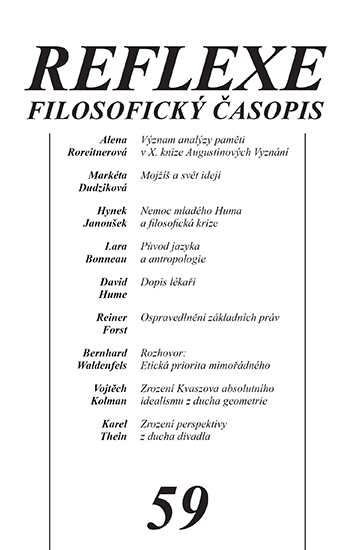
Book review: Jan Černý, Jevení a spása, Subjektivita v materiální fenomenologii Michela Henryho, Praha (Filosofia) 2019, 255 str.
More...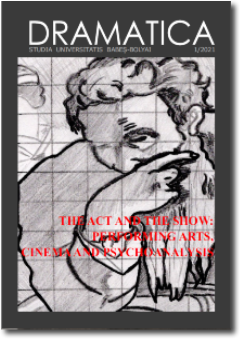
Keywords: nothingness; I; eye; language; anxiety; real;
Film as Not-Film – Samuel Beckett and the Vivid Show of Anxiety. This paper aims to offer a psychoanalytic reading of the living suffering of Samuel Beckett concerning the trauma of birth doubled by the sin of being born with particular reference to his theatrical work Film from 1965. In Film the real nothing is converted into the image of multiple eyes (“I”s) which, beyond the idea of tragedy, translates the multiple division of the subject into Eye and Object, an acting out of the self-consciousness through the concentric circles of the anxiety. In this sense, the theatrical play between in-between and out-between grasps anxiety as the symptom of every event of the real. With his (not)film, Beckett represents I and Eye, Not I and Not Eye at the same time.
More...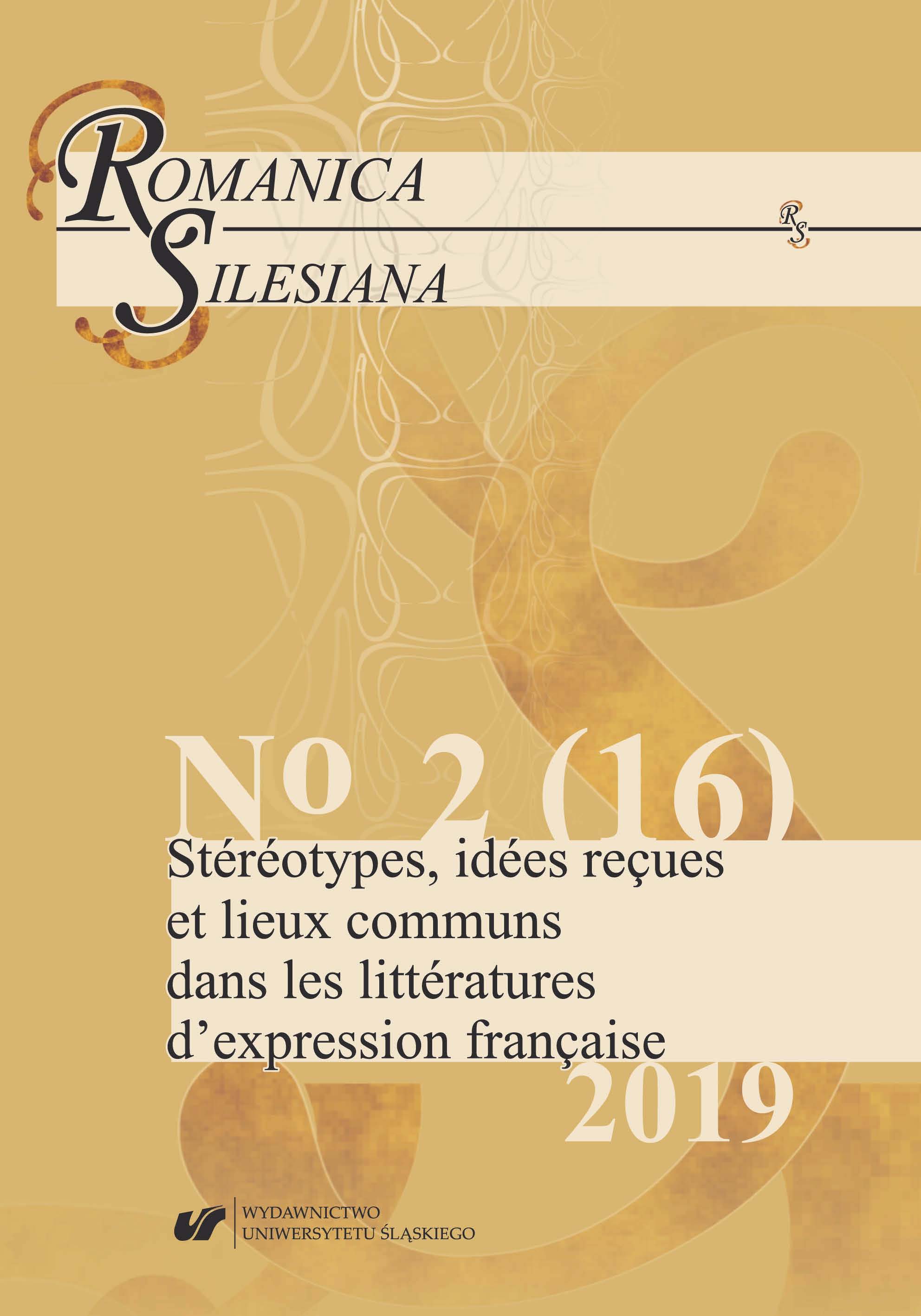
Keywords: adolescent dystopian fiction; Jean-Claude Mourlevat; stereotype;reading;
Adolescent dystopian literature has been in vogue recently. Its popularity reflects in fact several aspects, from readers’ preferences, through marketing rules, to writers’ choices. The predominance and reiteration of dystopian fiction suggests that they can involve stereotypes. Taking into consideration the fact that the stereotype is a reading construction, we analyse in this paper the role of stereotypes in perceiving and decoding a dystopian universe, with its elements, such as prison environment, oppressive authorities, tentative of revolt, and final victory or defeat, with respect of his young readers, in Jean-Claude Mourlevat’s novel Le Combat d’hiver.
More...
Keywords: landscape; stereotype; identity;Belgian literature;
Landscapes, just like stereotypes, should be perceived as mental constructions. They appear in literature as indispensable tools in the development of identity, both collective and individual. The present paper traces the evolution of this construction and its different uses changing with time: from the emergence of the Belgian literature (and Belgium) to the present days. Literary examples used in the paper refer, among others, to the works by Gautier, Verhaeren, La Garde, Gevers, Masson, Rolin, Bertrand, Delaive and Gunzig.
More...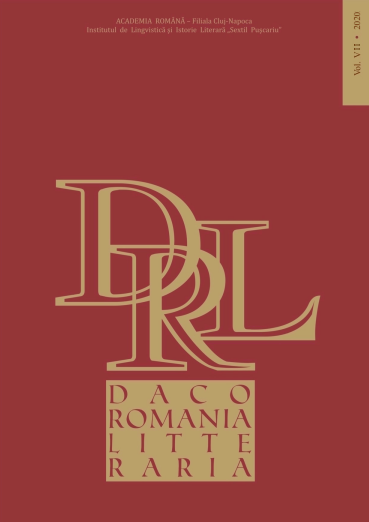
Keywords: marginal space; minority community; ghetto; shtetl; everyday reality;
Two years pass between 1931, when A.L. Zissu, one of the most important representatives of the Jewish community in Romania, voices publicly his doubt regarding the existence of the Romanian-language Jewish literature, and the moment of publication of the volume opening the series of the ghetto-illustrating novels (I. Peltz, Calea Văcărești, 1933). By the time of the political rise of the radicalized right wing, which concluded with the ostracizing of the Jewish community, and, in the cultural sector, with the blacklisting of their literary creation, Foc în Hanul cu Tei [Fire in the Linden Tree Inn] (1934) by the same I. Peltz, Ghetto Veac XX [20th Century Ghetto] by Ury Benador, and Copilăria unui netrebnic [A Wretched Manʼs Childhood] by Ion Călugăru (1936) were published. From the Văcărești Route of Greater Romaniaʼs growing metropolis, through the Jewish neighborhood of an important town by the Danube (Brăila), to “ulicioara Țiprei” in the anonymous Moldavian bourg of Dorohoi, the ghetto novel tends to complete out of time the fresco of the inter-war Jewish community; the scope of this phenomenon can be guessed by looking at the started literary projects, some of them abandoned after the first volume (Ury Benadorʼs trilogy, Ghetto veac XX), some other completed (continuing Copilăria unui netrebnic, Ion Călugăru writes Trustul [The Trust], 1937, and Lumina primăverii [The Light of Spring], 1939). From the very beginning, the frequency of the phrase in the literary text is insignificant, despite the fact that it has been present in the Romanian prose writing since the third decade of the 20th century in two of the titles, at Benador (Ghetto veac XX) and Ludo (Ghettouri [Ghettos]). Here, too, the ghetto refers to its historic meaning of elsewhere, its local pinpointing being challenging; and when referenced, it is done metaphorically, linked with a state of sentimental isolation, at I. Peltz and Ury Benador. By the time of the terrible connotations it would acquire in the following decade, the “ghetto” painted by the Romanian-language Jewish writers would grow perceptively close to what Loïc Wacquant calls the “ethnic neighborhood”, and the idea is backed by a flexibility of its boundaries and an incipient intrinsic cultural diversity. Commitments such as the rejection of the artificial, objectivity, personal experience guide the Jewish writerʼs narrative endeavor in the temporal cut-out of the third decade: overall, the ghetto novel resounds, first of all, owing to its biographic nature, while some other particularities include the “harmony of space”, by keeping the plot within the exclusive perimeter of the ghetto and by anchoring it in everyday life.
More...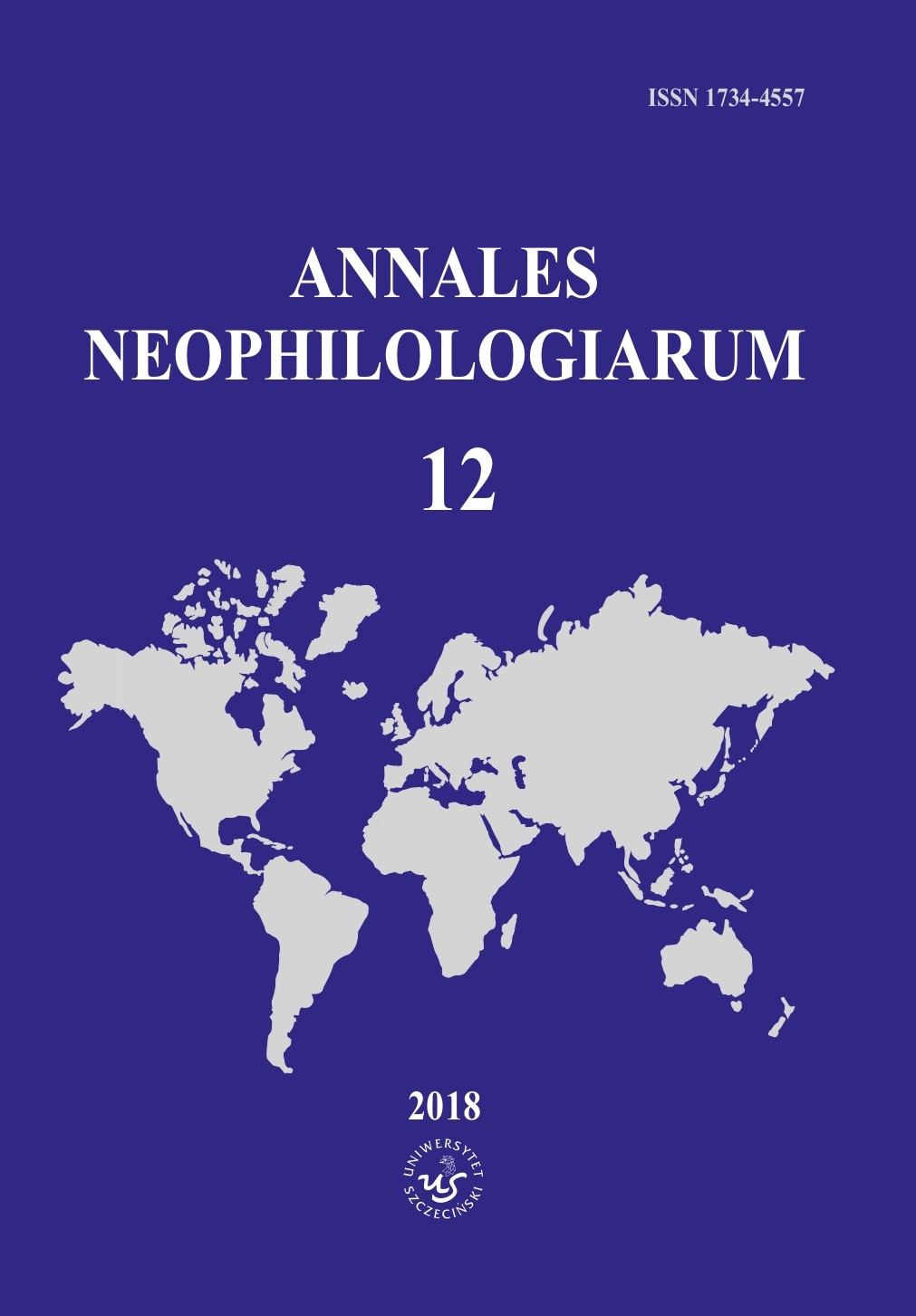
Keywords: dystopia; Andrevon; totalitarianism; utopia; fear
This article aims to analyze the traits of dystopia as a literary genre, which are present in the novel L’oeil derrière l’épaule, written by a contemporary French author Jean Pierre Andrevon. His anti-utopia takes place hic et nunc, beyond time, in a closed space It presents a utopian vision of society, based on an intellectual hypothesis, which gradually degenerates into a totalitarian system limiting individual rights. The article examines phenomena that are typical for dystopia, such as the hyperrationality of a dystopian society and the binary opposition between the society and the individual. It also analyzes intertextual relationships of the text with George Orwell’s (1984) and Ira Levin’s (The Stepford Wives, The Perfect Day) dystopian fiction.
More...